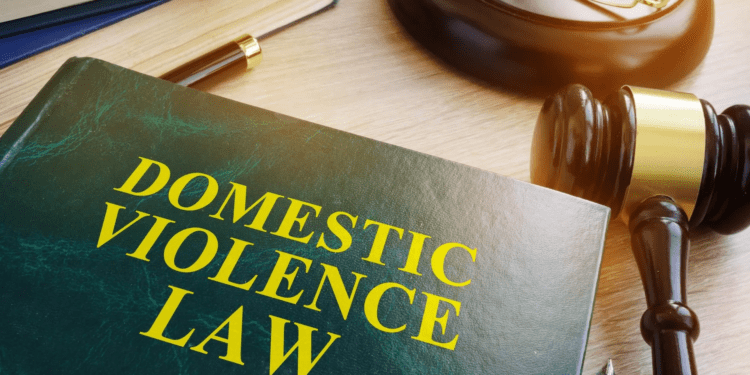Key Takeaways
- Domestic violence laws are broad and evolving, addressing various forms of abuse beyond physical violence.
- It is crucial to recognize and understand the many types of abuse, including emotional, psychological, financial, and digital, to support victims better.
- Recent legal updates and increasing public awareness have fortified survivors’ protections, emphasizing prevention and intervention.
- Being well-informed about legal rights and available resources empowers survivors and those who support them.
- Communities play a significant role in creating safer environments by promoting education, support networks, and effective preventative strategies.
An Overview of Modern Domestic Violence Laws
Domestic violence laws have changed dramatically in recent decades. Previously, legal frameworks tended to focus primarily on physical violence occurring within family or intimate relationships. Today, legislators and communities alike recognize that abuse can take many forms and that its effects reach far beyond physical harm. Laws are now designed to capture patterns of behavior meant to control, intimidate, or isolate a person, acknowledging that the invisible scars of manipulation and coercion are as severe as bruises or injuries. These expanded definitions open more pathways for survivors to seek protection and support.
Navigating these laws can be overwhelming, especially when lives and families are at stake. Consulting with a Domestic Violence Lawyer may help clarify legal rights, possible outcomes, and the steps necessary to obtain restraining orders or pursue criminal charges. According to research published by the National Institutes of Health, nearly one in four women and one in nine men will experience severe domestic violence at some point in their lives. These statistics highlight the pervasiveness of the issue and underscore why modern laws are vital for every community.
Types Of Domestic Abuse Recognized In Law
Many people still associate domestic violence primarily with physical attacks—punches, kicks, slaps, or acts resulting in visible injuries. However, the legal system acknowledges a much wider range of harmful behaviors. Emotional and psychological abuse, for example, can wear down a person’s self-esteem and sense of safety, leaving lasting trauma. Financial abuse—such as withholding money, sabotaging employment, or racking up debt in someone else’s name—can trap victims in cycles of dependency and fear.
- Physical Abuse: Involves hitting, shoving, choking, or using weapons. Physical injuries tend to be the most apparent, but even threats of harm can be prosecutable as abuse.
- Emotional or Psychological Abuse: Includes insults, threats, manipulation, harassment, and controlling behavior. These tactics create fear and undermine autonomy, often cutting victims off from friends or family.
- Financial Abuse: Occurs when one partner restricts the other’s access to money, education, or work opportunities, making it difficult for the victim to leave or rebuild their life.
- Sexual Abuse: Any forced or non-consensual sexual activity, including between spouses or intimate partners, is considered a criminal offense and a severe violation of personal rights.
- Technological Abuse: With the rise of smartphones and social media, digital stalking, harassment, or surveillance through GPS tracking and online monitoring have become significant legal issues.
Recognizing the full spectrum of abuse ensures that more individuals receive the protection and justice they deserve, regardless of how their abuse manifests.
Reporting Domestic Violence: Steps And Challenges
Coming forward about domestic violence can be incredibly difficult. Victims might fear retaliation, financial ruin, losing their children, or simply not being believed by authorities. Social stigmas can further silence those suffering, especially in tight-knit or marginalized communities. Nevertheless, taking the step to report abuse can be life-saving and is often necessary for obtaining legal protection.
The U.S. Department of Justice provides accessible resources and guidance on reporting domestic violence, what evidence to document, and the protections available under the law. Emergency hotlines, law enforcement agencies, and crisis advocates are typically the first responders. Survivors can expect to be asked about recent incidents, ongoing threats, and whether children or dependent adults are at risk. Although the path is not always straightforward, each step taken towards reporting can help ensure immediate safety and long-term healing.
The Legal Process After Reporting
Once a complaint is filed, the gears of the legal system move quickly to prioritize the victim’s safety. The process usually begins with a police report, after which officers may issue an emergency protective order to keep an alleged abuser away from the survivor’s home or workplace. Law enforcement will then launch an investigation, often involving interviews, photographs of injuries, and securing any relevant physical or digital evidence.
Prosecutors review the facts and decide whether or not to press charges formally. Some jurisdictions follow a “no-drop” policy, which means charges may proceed even if the victim later asks to withdraw the case. This policy exists to shield survivors from coercion or pressure to recant. If the case goes to trial, the survivor may testify, but can also access victim advocacy services for emotional support and guidance throughout court proceedings. Courts may mandate counseling, parenting classes, or substance abuse programs as part of sentencing. The process can seem daunting, but many survivors find relief and a path toward a safer future by following each step.
Recent Changes And Expanding Protections
In response to growing public awareness and advocacy, many states have enacted new laws to address evolving forms of abuse. Legislative bodies have increasingly included non-physical abuse, such as coercive control and financial manipulation, as explicit forms of domestic violence. Digital abuse—where perpetrators use technology to harass or monitor their victims—has also been formally addressed in statutes, with new laws targeting cyberstalking, unauthorized device access, and online intimidation.
These enhancements are often a direct result of media coverage, survivor testimonials, and ongoing research. Public demand for better risk assessment and coordinated community responses has led to implementing tools that help law enforcement identify high-risk situations earlier. Modern legal updates reflect a commitment to understanding all facets of abuse and offer a wider safety net for those in need.
Support Systems For Survivors
No survivor should have to face domestic violence alone. Across the country, robust support systems work tirelessly to provide shelter, counseling, legal services, and ongoing emotional care. Many hotlines operate 24/7, giving immediate access to trained advocates who can arrange safe housing, explain legal rights, and provide a nonjudgmental ear. In addition, online forums and communities offer anonymity and the ability to connect with others who understand the unique challenges of domestic violence.
- Free and confidential hotlines are often available in multiple languages and can refer callers to local shelters, health care, and legal support.
- Legal aid services assist with obtaining restraining orders, navigating family court, and applying for public benefits where needed.
- Community centers may offer childcare, housing assistance, job training, and support groups tailored to both the immediate aftermath of abuse and long-term independence.
- Culturally specific services are increasingly important, ensuring resources are accessible and sensitive to diverse backgrounds.
The involvement of supportive friends, coworkers, and neighbors can play a pivotal role in recovery and in encouraging others to seek help.
Preventative Strategies In Communities
Preventing domestic violence is as much about changing social norms as it is about responding effectively when abuse occurs. Schools, workplaces, and neighborhoods are implementing educational initiatives to promote respectful relationships, raise awareness about red flags, and teach bystanders safe ways to intervene. Bystander programs encourage ordinary people to disrupt patterns of violence and support those at risk before situations escalate.
- Educational workshops can focus on empathy, communication, and conflict resolution skills for all ages.
- Public service announcements, posters with support hotlines, and community campaigns ensure resources are visible to those who need them.
- Mentorship and peer support programs help shape healthy relationship skills in youth and adults alike, breaking the cycle of abuse with every generation.
Communities that foster open conversations about abuse, accountability, and respect set the stage for meaningful long-term change.
Your Rights And Where To Seek Help
Everyone deserves safety and dignity. Knowing your rights is the first step to breaking free from an abusive situation. Survivors are encouraged to document incidents of abuse, keep threatening communications if safe to do so, and seek professional legal counsel when needed. Law enforcement agencies, healthcare providers, and advocacy groups offer multiple avenues to seek safety and justice; supportive connections can make a life-changing difference.
Readers seeking more information on evolving debates and policies can access regularly updated expert perspectives through CNN’s coverage of domestic violence. Ongoing education, stronger legal protections, and engaged communities remain essential for preventing harm and promoting recovery.
By understanding domestic violence laws, supporting prevention, and standing alongside survivors, everyone can contribute to safer, more compassionate communities.

















